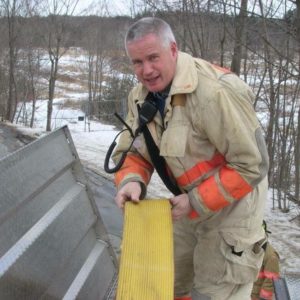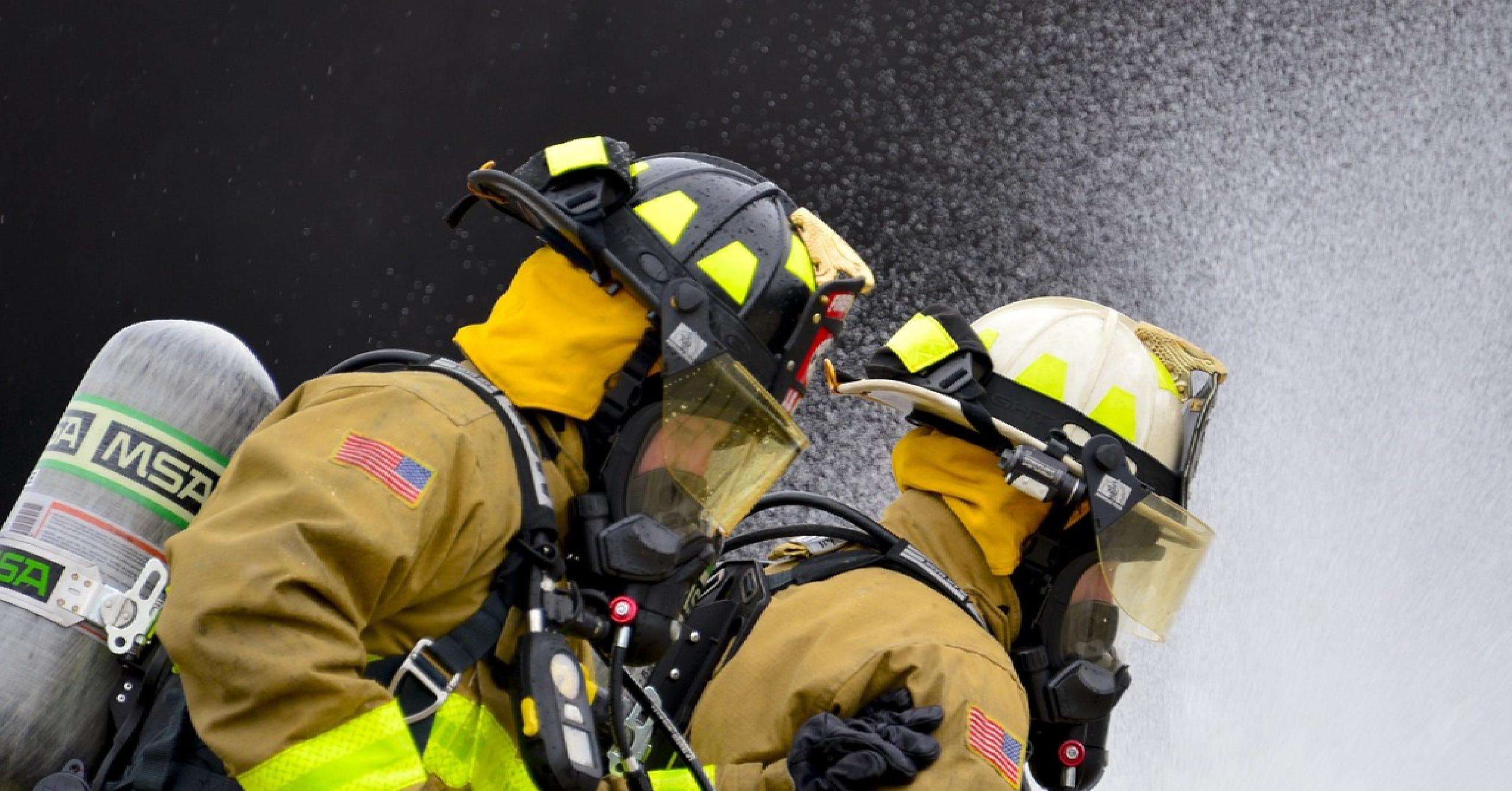I normally don’t wear hats. But when I do, I own a few. There’s the sun-proof hat while doing chores on the tractor and the ball cap when I go to the beach with the family. Or the Husqvarna safety helmet when cutting all the firewood we use to heat the house on the homestead or to boil maple syrup over.
I also have one hat I’m particularly fond of, well a helmet. I am on the fire department in town, and I have been on various Fire Departments (most around these parts are primarily served by folks on-call at home or about their day, with maybe one or two full-timers on from 6AM to 6PM mostly for quick ambulance response) for about 14 years now give or take
All these hats teach me a lot about the day job. The farm is full of lessons to bring to IT and life and lessons for the kids (like preparation, and patience, in planting asparagus). Or the day I realized the value of my chainsaw chaps. . .
The Fire Service is no different. So here they are. Three Two lessons for your day job from the Fire Service. They aren’t just for technologists, either. (The third will come later in the week)
Lesson One: Leadership, In One Picture
For the most part in the fire service, the folks who wear the white helmets earned that right. There was no Officer Candidate school. There was no “come out of a special university as a butter bar” (not that I have a problem with the military academies or the caliber of leader they turn out! But you don’t have to talk to too many senior enlisted folks to hear stories about brand new officers). Just about every single officer in the fire service, let alone the chiefs, started out their career rolling hose, asking a million questions and getting assigned to the crap assignments on a scene. They all put in thousands of hours of service at the lowest peg on the seniority board. Now, sure new lieutenants can sometimes get that “hey! I have a new rank!” “problem” – but it is normally short-lived. But by the time one progresses to a chief officer? They have usually been there and down that, they’ve worked hard to achieve that rank, they look up to the tradition before them and have a love for the brotherhood/sisterhood that is the fire service. They would do anything for one of their firefighters under their command.

They usually don’t get too proud. Mostly? They lead by example. For sure, sometimes they can yell, sometimes they can be a little intense on a fire scene when running a stressful command (You don’t have to listen to too many multi-alarm fire radio logs to feel bad for dispatchers talking to some commands on scene 😉 ).
But they lead by example. So my old chief at the department I was Full Time on and spent more than a few years on just retired. He worked hard up to the rank of chief the hard way. When he was ready to take his first step back, he stepped aside and pushed one of the folks he mentored into the role. Along the way, he took many young firefighters and officers under his wings and taught them. In fact, the chief who replaced him went up the ranks on his department and inherited many of those same leadership traits. He stuck around on the department for more than a few years after turning the white helmet in. I bumped into him on many scenes – operating/pumping an engine, helping clean up, checking in on the folks. Doing whatever needed to be done. That’s pretty much what Chief Andy was all about – he kept his mouth quiet, but let his arms and legs do the talking for him.
I don’t know when exactly this picture was taken. His gear is white here (well it’s supposed to be white. You don’t see a lot of white gear that stays white in these parts), so don’t know if he was still a chief in this picture or if he was “just an engineer” – but even if he was a chief, this picture wouldn’t be unexpected at all.
I commented on the department’s facebook post about Andy’s retirement. I said ” This picture right here says more about leadership, work ethic, teamwork, and care for others than one could find in 250 leadership books. Happy to have been able to call you Chief, Andy, – even during those weird 6 months of being the sole Full Timer ![]() Enjoy uninterrupted sleep. Well except for the bathroom runs from someone at your advanced age.” (that’s the other thing about the fire service, btw – you have to give each other a hard time and be a sarcastic jerk at times. At least once you’ve been inside a fire or two, or been on one of those tough calls with your brothers and sisters seeing someone’s worst day and trying to help them out. You bond quickly working your butt off and worrying about each other and seeing some of the crap you have to see with those calls that will never leave your mind.)
Enjoy uninterrupted sleep. Well except for the bathroom runs from someone at your advanced age.” (that’s the other thing about the fire service, btw – you have to give each other a hard time and be a sarcastic jerk at times. At least once you’ve been inside a fire or two, or been on one of those tough calls with your brothers and sisters seeing someone’s worst day and trying to help them out. You bond quickly working your butt off and worrying about each other and seeing some of the crap you have to see with those calls that will never leave your mind.)
His response was exactly what I’d expect. And it’s exactly why I’m sharing this lesson here – “Thanks Mike. I would not have anyone doing anything I would not do. Called Teamwork. Thank you for your comments.” It’s called teamwork. Now sometimes in the fire service, I’ll see folks who aren’t yet officers forget that. Sadly there is still some grandstanding – for some reason some people want to be the first one on the radio. Or they want to announce they have command – until someone else comes and takes command with more seniority 😉 -. So it happens – but the true leaders in the fire service? They get it. Do you lead a team? When’s the last time
Do you lead a team? When’s the last time you showed how to do something? Are you a team lead? When’s the last time you appreciated the folks who you lead? When’s the last time you led by example and did the hard job that no one wants to do? Don’t be the manager in office space who says “yeah, I’m going to have to ask you to come in on Sunday” – instead, be there with the team!
It’s funny. As I write this post I’m helping a great client do a monthly release with a lot of moving pieces. I have my right eye sort of looking at the chat app waiting for my turn to do the SQL pieces. I see exactly what I’m talking about there. The manager responsible for the release is there. He’s not pushing and harassing. He’s summarizing, asking for quick updates when appropriate and helping clear obstacles. And just looking at the one page of chats in front of me? I see the word “Thank” about 12 times. “Thank you!” “Heck, Thanks, everyone!” “Wow. Amazing, thanks!” “Can’t believe how much we are doing and how well it is going, thanks!” Also in the chat is the VP of the division responsible for all of this. Not a single “are we done yet!?” and nowhere is there a sense of “he doesn’t trust us!” – instead, he’s there as a cheerleader and encourager. And he’s here on a weekend while his “troops” are working. I love that. Do that. Do that and you’ll go far.
Lesson Two: Teamwork and Command
This one is big. When it comes to a fire or accident scene, you don’t see a lot of people sitting around doing nothing – unless they are being forced to wait in rehab after working the call. Or they are waiting their turn to go in. Now sure on a big scene with lots of mutual aid, there are moments between the buzz of “family reunion” time. “See you at the big one,” is a greeting or goodbye you may here after a joint training or bumping into someone you went to the academy or a class with. And at the “big ones,” you do see a lot of familiar faces. It’s a small world. But for the most part? Everyone is doing their jobs.
No one is saying “but hey! Why is that person doing _____ ” they are just looking for what they can do. Of course, they are doing it within the command structure – they are hopefully not freelancing with no one knowing what they are doing. The way this maintenance is running reminds me of that. Many independent folks doing various tasks – checking in with “command” from time to time.
This is an attitude that comes from the top down. I’ve been on fire scenes with, well, terrible commands. The kind where you look at a pal and give them “that” look. Those scenes? Not as nice. They are micro managed. Or not managed at all. No plan is in place. Command is wishy-washy. Go here! No! Go There! “Put that ladder right there!”, “ahh what about the wires?” “No put it there instead!!” And when you see a scene run like that? That’s pretty much how it goes. You look to the smaller sector commands or ops to hopefully filter out that and keep it just a bit safer. Not always guaranteed, though.
What about you? What about your patches, your releases, your troubleshooting? Do you exemplify calm from the top? Do you setup a proper chain of command and have a plan? Do your people sort of just know what they have to do because the training and your leadership principles meld and you suddenly have many folks marching in the same direction without appearing to coordinate, but still appearing coordinated?
You can. We’ll talk more about that in preparation and training in a follow-up post – it just now occurs to me that I’ve shared the picture and over a thousand words. I think the third lesson will be saved for a follow up post later in the week to spare your poor eyes! Subscribe to the blog in e-mail, sign up for my newsletter, and the third lesson will come out by Wednesday or so. It’s a lesson about preparation.


